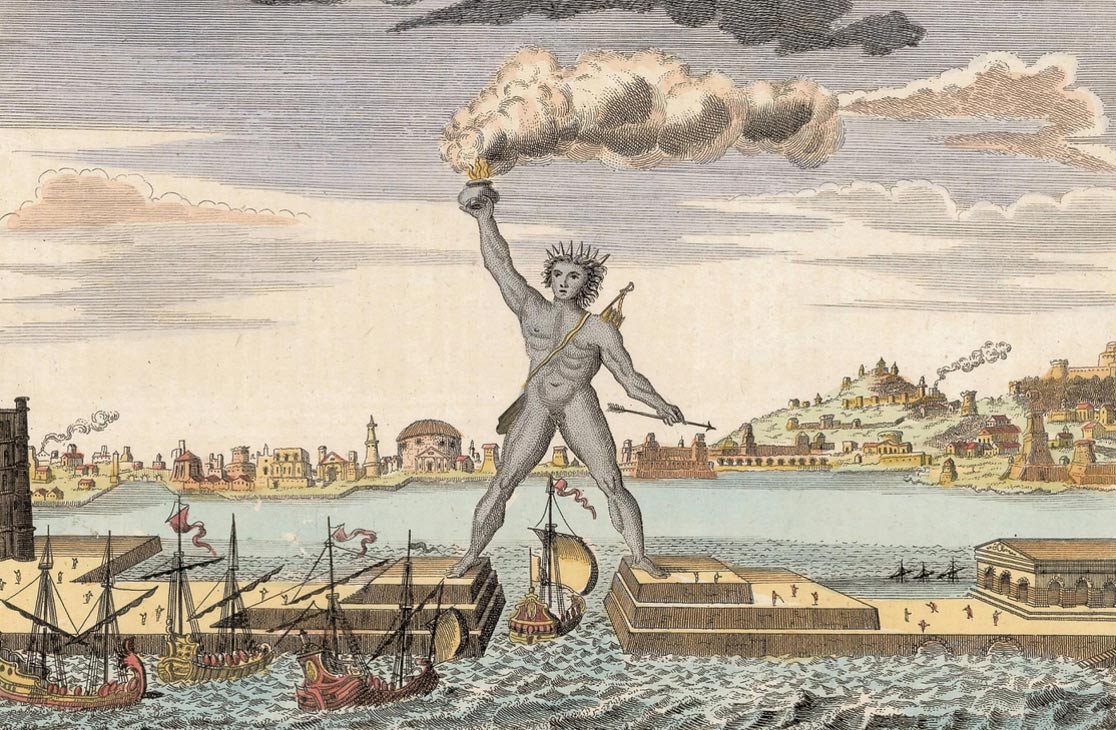


Literary references, including Shakespeare's Julius Caesar, describe the statue as straddling the harbor entrance. It was constructed to memorialize Rhodes' successful defeat of Demetrius Poliorcetes, who attacked Rhodes for a year. It was known as one of the Seven Wonders of the Ancient World and was erected by Chares of Lindos in 280 BC. The new statue of Helios would be a reminder of Greece’s great history – and also how temporary seemingly unassailable power can be.The Colossus of Rhodes was a statue that represented the Greek sun-god Helios.

Surely sometimes it’s worth looking beyond cost and risk, and instead think of the future generations we can inspire. We can always look at the cost of building great projects and claim they are unaffordable, but such thinking would mean we would never have ended up with the Colossus in the first place.

Will this new Colossus be crumbled in 1,000 years, an exemplar of the decadence of building vanity statues while all around us Europe collapsed? Perhaps.īut, still, I hope it goes ahead. “Look on my works, ye mighty, and despair,” wrote Shelley on the fallen statue of Ozymandias. There is one important change – the new one will have a loincloth over its giant nether regions. (Although it probably didn’t, as it would have blocked entry.) Surely modern tourists will be keen to see the new statue bestriding two piers in the harbour of the city, as the original was said to have done. After the capture of Rhodes by Arab forces in 653AD, it was broken down and sold off to a merchant who took it away on 900 camels. Even after the Colossus fell, tourists flocked to admire its huge limbs, and Pliny the Elder declared no one could get their arms around even one giant thumb. The seven wonders of the world provided a guide for early Hellenic tourists. Crowdfunding is ever more popular – and what a thing this would be to give money to and see it succeed. Greece depends on tourist cash more than any other European country and Rhodes has seen tourism in decline over recent years. Few could deny the country that possibility – and if the money comes from donors and individuals, rather than the beleaguered government, surely it is to be valued much more than projects such as sports stadiums that fall to pieces after great events. The architects presumably also aim to give a new image of Greece – opening a new chapter of strength and excellence. The Greek government has been quiet on the plan so far – but certainly the plan fits in with the Keynesian ideal of igniting economies through major building projects. Aris A Pallas, the architect leading the project, says: “We want to revive the symbolism it imbued, pooling human and financial resources together from across the globe.” So the new Colossus will be paid for by crowdfunding, donations and some government help – and the projection that it will generate an estimated €35m worth of tourism a year. Greece is no longer the terror of the world – and there is no old armour to sell off. It was an image of triumph – and a warning to Antigonus never to try it again. After the armies of the Cypriot ruler Antigonus I Monophthalmus failed to take the city in 280BC, they dumped their weapons and military supplies and fled – and the Rhodians sold off the stuff for the cash to build a giant statue. The first statue pretty much funded itself. It would be an astonishingly ambitious project for any country – but for Greece, which has suffered so much in recent years, is it foolhardy? When Greek people are hungry, surely €250m could cover a lot of meals for children and supplies for hospitals.


 0 kommentar(er)
0 kommentar(er)
